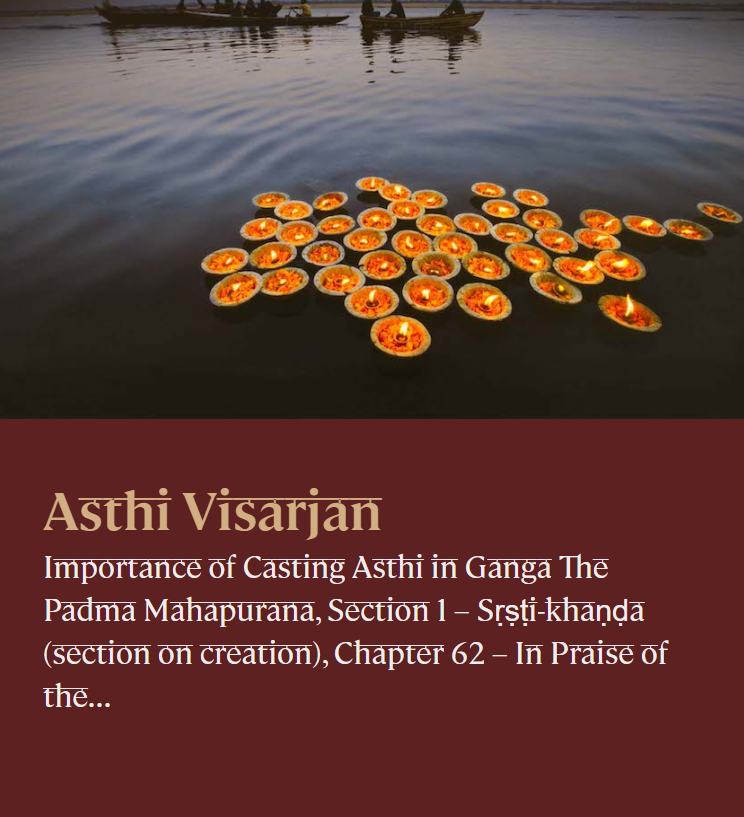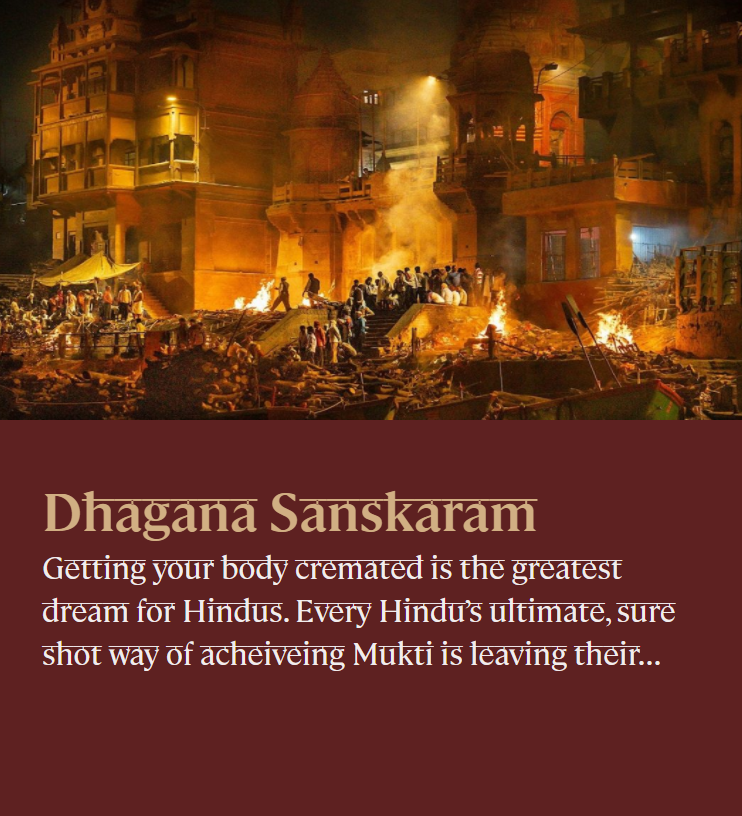
The curiosity about death occupies the minds of a majority of humanity, no matter what their religious following. As we have already seen, Varanasi is specifically the space where Hindus choose to leave their body as a way to attain moksha.
For Hindus, rituals post leaving the body is as important as all rituals while being alive and living in the body. Called Shraadha, it forms the last of the 16 samskaras (referred to as antyeshti) Hindus families must perform for the immediately departed soul and for their ancestors on an annual basis, during pitru paksha. The first annual death anniversary is observed by a shraddha ceremony that enables the deceased (preta) to be admitted into the assembly of forefathers (pitri). This also expresses unconditional love of Hindus towards their ancestors.
This quote from the Isa Upanishad, verse 17 says:
वायुर्-अनिलम् अमृतम् अथेदं भस्मान्तं शरीरम् |
ओं क्रतो स्मर कृतं स्मर क्रतो स्मर कृतं स्मर || १७ ||
vāyur-anilam amṛtam athedaṁ bhasmāntaṁ śarīram |
oṁ krato smara kṛtaṁ smara krato smara kṛtaṁ smara || 17 ||
Let the vital life-energy ‘Wind’ [vāyu] present in the body now be offered into the all-pervading, eternal cosmic life- energy ‘Air’ [anilam]; and now let this gross body (along with subtle body) be offered into the sacrificial fire and be reduced to the sacred ashes [bhasmāntam]. ‘Oṁ’, the Supreme Consciousness (Īśā), the Supreme Deity of the enriching sacrifice, I remember and offer all my actions into this fire sacrifice to experience oneness with You. O mind, remember the Supreme Consciousness, whom you have been always remembering in your actions.
Expanding on this, the SPH says:
“The way Sanatana Dharma approaches Death It’s very clear, the body has nothing useful. It has no use after death, that is why they say, let it disintegrate – bhasmāntaguṁ śareeram. This verse declares about the need of cremation for Hindus. Why cremation in Hinduism? It is this verse that shows the way why cremation in Hindu tradition, because – vāyur-anilam amṛtam athedaṁ. Let the ‘prana’ merge with the Cosmic Prana. bhasmāntaguṁ śareeram – let the body go back to its basic elements, no use! After you leave the body, it has no use; you don’t need this after that. If you want, you will have one more body. You will take a new body, but this itself is not required.” (January 25, 2016).
For more details, watch:
The Pitru Paksha is a period in the Hindu year when people pay their respects to their deceased elders by performing Tarpanam and Shraadha rituals. The 16-day long phase in the month of Ashwin is considered ideal for penance and asking for forgiveness from the dead relatives, for the wrong done to them knowingly or unknowingly. Pind Daan is a ritual of offering food (cooked rice balls mixed with black sesame seeds) to the crows, who are seen as the representatives of Lord Yama or agents of the dead.
On the death of a Hindu, there are a few rituals to be performed on the 3rd, 5th, 7th days until the 11th where the most important rituals of Shraadha are done ending with a Pinda Daan and Tarpanam.
Shraadha is mentioned in many ancient Hindu texts. Here we take the reference of the Garuda Purana, Dharma Khanda, Chapter XXXIV, which elaborates as follows:
- No Shraadha can propitiate the soul so long as it does not enter the body. If the soul is not propitiated daily during the ten days (after it leaves the body) it will have to wander in the ether without food, agitated by hunger.
- The soul (of the deceased) stays in the water for three days, in the fire for three days, and in the ether for three days, For one day, it stays in Indra’s heaven.
- When the body has been burnt in fire, the descendent should offer water libation to the departed soul. The mourners should take bath and feed upon the cake or the rice-meal.
- They should perform the Nautaka Shraadha on odd days, viz., the first, third, fifth, seventh, ninth, and the eleventh.
The concluding rites should be performed at the same place, i.e. threshold of the house or at the cremation ground or in a holy place or in a temple, wherever the first days’ rites are performed, The Shraadha on the eleventh day is common to all jatis amongst Hindus. There is a ceremonial ablution for purification. After performing the eleventh day Shraadha they become free from impurity accruing from death.
Shraadha Related Services (SRS) at Kashi Sarvajnapeetha
Shraadha ceremony is followed, irrespective of whether the departed was a believing or non-believing Hindu, as it entails paying obeisances to one’s ancestors, and bringing peace to the departed.
In recent times, these rituals have become diluted and are not conducted as defined in the respective sampradaya’s agamic traditions. Given the importance, details and complexities involved in the Shraadha rituals, the following Shraadha related services will be offered to Hindus from anywhere across the world, immaterial of sampradaya they follow:
- End-to-end rites, including immersing of the ashes in the sacred Ganga – all done perfectly and completely as per laid down agamic tradition.
- On-line Shraadha offering – where one can send the ashes or even the body of the departed to Kashi Sarvajnapeetha and watch the whole Shraadha service online from home or wherever one is located around the world.
- Offline Shraadha offering – for a resident of Kashi Sarvjanpeetha who passed away or if an individual or group of individuals who accompany a body or carry the ashes and want the Shraadha to be performed in their presence.




